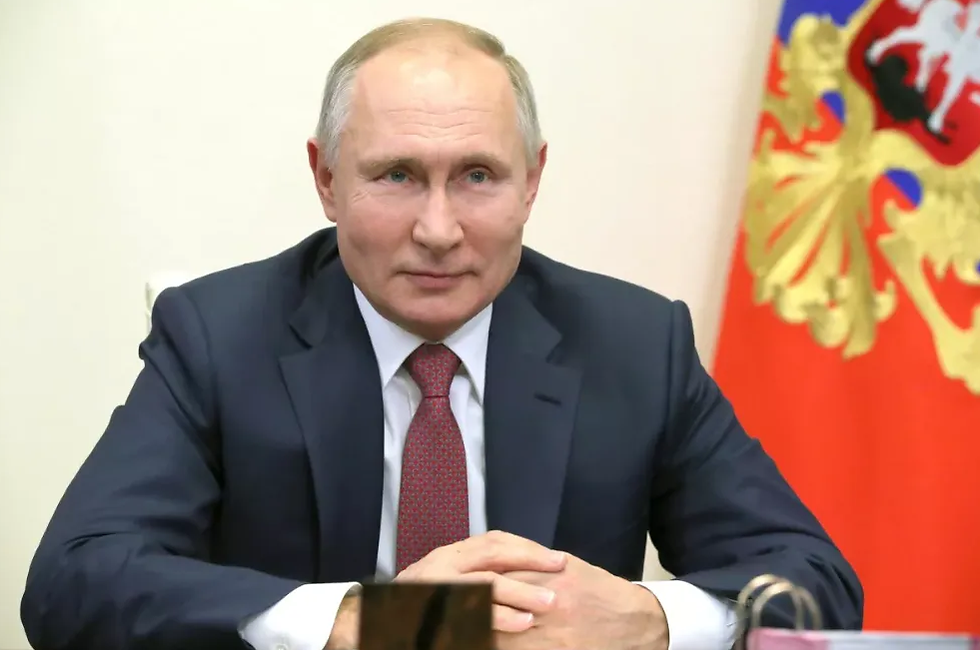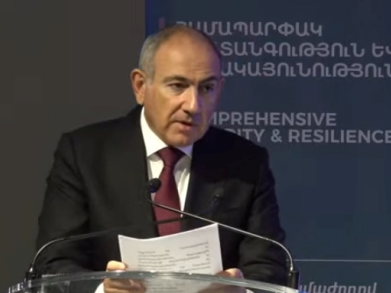Armenian Prime Minister Pashinyan Meets with OSCE Chairman-in-Office to Discuss New Paths for Peace and Regional Cooperation in the Caucasus
- Times Tengri
- Oct 15
- 4 min read

On October 14, 2025, Armenian Prime Minister Nikol Pashinyan met with visiting OSCE Chairperson-in-Office and Finnish Foreign Minister Elena Valtonen in Yerevan. The meeting took place amidst the crucial progress in the normalization of relations between Armenia and Azerbaijan and the reshaping of the regional geopolitical landscape. The two sides engaged in dialogue on follow-up arrangements for the Nagorno-Karabakh issue, the Caucasus Security Architecture, and OSCE reform, sparking international attention on the prospects for sustainable peace in the South Caucasus.
I. Meeting Background: A Turning Point from Conflict and Confrontation to a Peace Process
The core context of this meeting was the recent breakthrough in the peace process between Armenia and Azerbaijan. In August 2025, under US mediation, the leaders of Armenia and Azerbaijan signed a joint statement in Washington, agreeing to end hostilities, recognize each other's sovereignty and territorial integrity, and launch the "Trump Path to International Peace and Prosperity" corridor, marking a historic turning point in the decades-long Nagorno-Karabakh conflict. Previously, the OSCE Minsk Group, the primary mediation mechanism for the Nagorno-Karabakh issue (co-chaired by Russia, the United States, and France), was widely criticized for its inability to effectively contain the conflict. Pashinyan had already stated in April 2025 that Armenia was prepared to sign a peace agreement with Azerbaijan and disband the Minsk Group, seeking instead direct bilateral negotiations and support from diverse international platforms.
At the same time, Armenia's foreign policy exhibited a "East-West balance." While maintaining its traditional alliance with Russia, the Pashinyan government actively expanded its ties with the EU and the US. For example, in July 2025, Armenia formally applied to join the Shanghai Cooperation Organization. In August of the same year, Pashinyan visited China to attend the commemoration of the victory of the War of Resistance Against Japanese Aggression and established a strategic partnership with China. Inviting the OSCE Chairman-in-Office to visit can be seen as an important step for Armenia to deepen security cooperation with Europe and optimize its external environment.
II. The OSCE's Transformation of its Role and the Restructuring of the Regional Security Architecture
The OSCE's participation in this meeting reflects the organization's need for self-reform in regional affairs. Since its establishment in 1992, the Minsk Group has provided a platform for dialogue on the Nagorno-Karabakh issue, but its resolutions lack binding force and are constrained by disagreements between its chairing countries (such as the Russian-US rivalry), resulting in limited mediation effectiveness. After the Nagorno-Karabakh conflict escalated in 2023, the Russian-led peacekeeping operation failed to prevent Armenia's shift in recognition of Azerbaijan's sovereignty, further undermining the credibility of this traditional mechanism.
Valtonin's visit emphasized the OSCE's commitment to "restarting dialogue and trust." The focus is likely to shift to two areas: first, assisting in the implementation of specific provisions of the Armenia-Azerbaijan peace agreement, such as border demarcation, enclave connectivity, and humanitarian assistance; and second, promoting the establishment of a new regional security framework to replace the dysfunctional Minsk Group. This direction aligns with the EU's strategic needs: Azerbaijan is a key partner in the EU's energy diversification strategy (such as the Southern Gas Corridor project), and the stability of the Caucasus is directly related to Europe's energy security. Furthermore, if the OSCE can demonstrate effectiveness in this mediation, it will help enhance its influence on broader issues, such as the Ukrainian crisis.
III. Armenia's Internal and External Considerations: Economic Reconstruction and Geopolitical Balance
For the Pashinyan government, this meeting is an extension of its domestic economic reconstruction and diplomatic risk-avoidance strategies. Since 2024, domestic protests have erupted in Armenia over the transfer of border villages, and the government has faced criticism for "ceding territory for peace." Therefore, Pashinyan needs to realize the benefits of peace through international cooperation. On the one hand, Armenia's economy relies on remittances and foreign investment. World Bank data shows that its GDP in 2018 was only $12.4 billion, and it is resource-poor. Normalizing relations with Azerbaijan could reduce military spending, open up cross-border trade channels, and attract EU investment (for example, EU aid to Armenia exceeded $76 million in 2019).
Meanwhile, Armenia is attempting to strike a balance between Russia and the West. Although Armenia is a member of the Collective Security Treaty Organization and the Eurasian Economic Union, the post-2022 Russia-Ukraine conflict has diverted Russia's attention from the Caucasus, prompting the Pashinyan government to accelerate its diplomatic diversification. For example, Pashinyan's visit to Turkey in June 2025 was hailed as a "historic breakthrough." In July of the same year, Armenia and Iran strengthened communication to address potential risks in the development of regional corridors. Cooperation with the OSCE can be seen as a key component in balancing the influence of Russia, Turkey, and Iran.
IV. The Caucasus in a Global Perspective: Great Power Competition and the Test of Multilateralism
The deeper significance of this meeting lies in highlighting how the Caucasus has become a testing ground for great power competition. The United States, by facilitating the Armenia-Azerbaijan peace agreement, is attempting to weaken Russian influence and advance the TRIPP economic corridor initiative. Russia, through the Eurasian Economic Union, is maintaining economic ties with Armenia (such as energy supplies). The EU and Turkey are engaged in a hidden competition for regional dominance. If the OSCE can effectively coordinate the interests of all parties, it could provide a model for innovation in global multilateral mechanisms—especially in the context of the inefficiency of multilateral institutions such as the United Nations due to great power rivalries.
However, challenges remain: Azerbaijan's military cooperation with Turkey, Iran's warning regarding cross-border corridors (August 2025), and nationalist sentiment within Armenia could all affect the peace process. Valtonin emphasized during the talks that "war is not inevitable," but sustainable peace depends on the implementation of specific commitments, such as a timetable for border opening and a refugee return mechanism.
Conclusion
The meeting between Pashinyan and Valtonin is both a pragmatic choice for Armenia to deepen its "balanced diplomacy" and a key attempt by the OSCE to revitalize its regional mediation role. At a time when globalization and geopolitical restructuring are intertwined, the Caucasus peace process not only concerns the well-being of the people of the region but also provides a window into the effectiveness of multilateralism and the coordination capabilities of major powers. In the future, the effectiveness of the implementation of the Armenia-Azerbaijan peace agreement, the progress of OSCE reform, and the interaction patterns of external forces will jointly determine the fate of war or peace in the region.







Comments